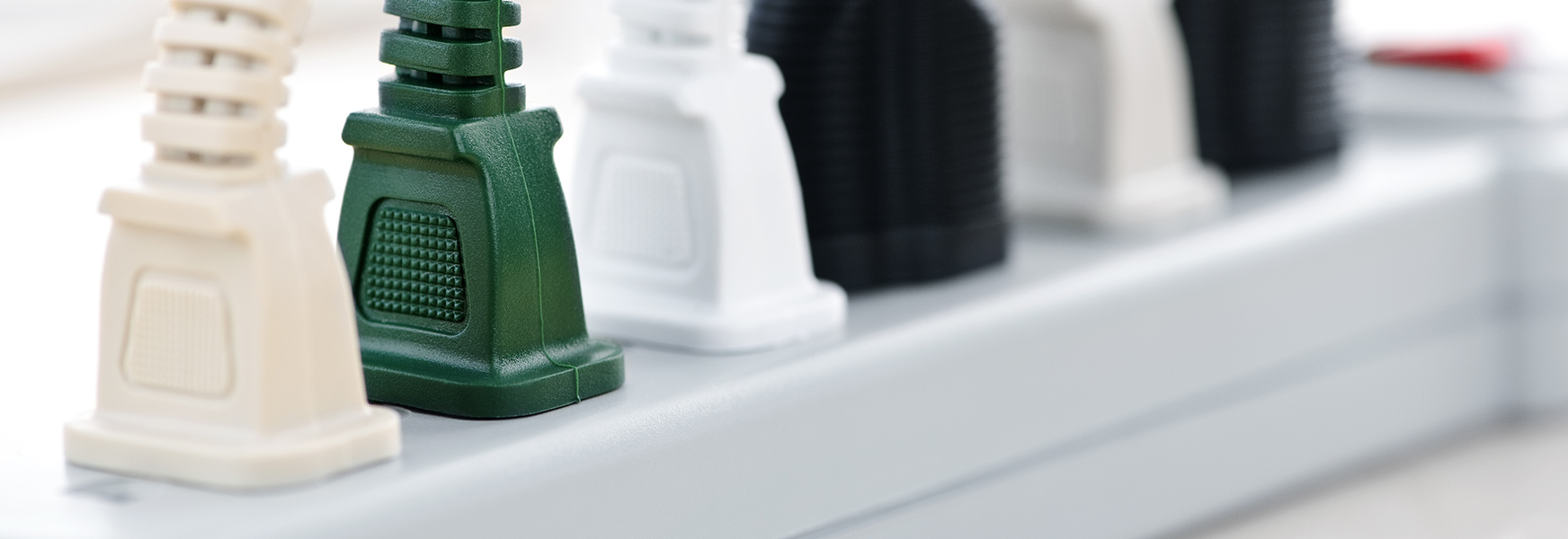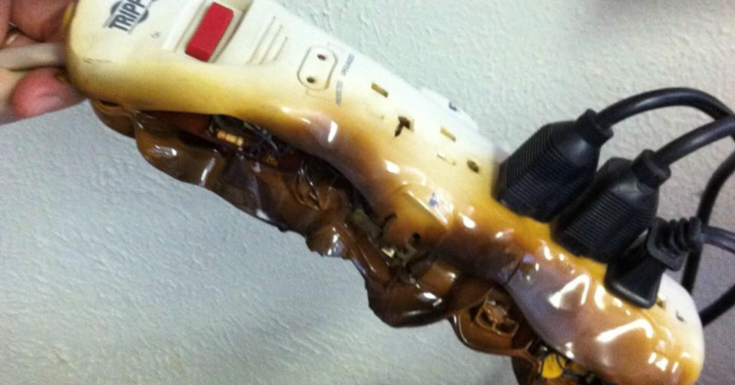Knowledge Trip on the Power Strip

Do you need to power more than one office device, tool, or appliance? This usually generates discussion about the use of a power strip. Power strips are not to be confused with extension cords. A power strip has many reference names- computer strip, surge protector, or portable outlet.
Underwriters Laboratories (UL), refers to power strips as Relocatable Power Taps (RPTs). The UL white book, or UL directory, describes power strips (RPTs) as "relocatable multiple outlet extensions of a branch circuit to supply laboratory equipment, home workshops, home movie lighting controls, musical instrumentation, and to provide outlet receptacles for computers, audio and video equipment and other equipment." Power strips can consist of several components making them substantially different than a typical extension cord. Power strips can include multiple electrical receptacles, on/off power switch, circuit breaker, grounded flexible power cord, electrical noise filtering and surge protection.
OSHA standard 29 CFR 1910.303(b)(2), Installation and use, requires that "Listed or labeled equipment shall be installed and used in accordance with any instructions included in the listing or labeling." Employers along with homeowners need to understand the proper use of a power strip. Manufacturers and nationally recognized testing laboratories are the ones who determine proper power strip uses.
Users should read the manufacturer’s instructions and/or the caution tags that are provided with new power strips. Let’s take a look at what UL says about the proper use of these devices. Click here for the complete regulation.
Power Strip Safe Use Guidelines:
- Indoor use only
- Connected only to a permanently installed branch-circuit receptacle outlet
- Only used to power devices with low-powered loads (computers, peripherals, or audio/video components)
- Not allowed for use with high power loads (space heaters, refrigerators, microwaves, toasters, coffee makers, etc.)
- Not routed through walls, windows, ceilings, floors, or similar openings
- Not to be powered from an extension cord
- Not to be connected together in a series (daisy chained)
- Not connected to other relocatable power taps (attachable multiple outlet devices)
- Not intended for use at construction sites and similar locations
- Not intended to be permanently secured to building structures, tables, work benches or similar structures, nor are they intended to be used as a substitute for fixed wiring.
- Not used with general patient care areas or critical patient care areas of health care facilities as defined in Article 517 of ANSI/NFPA 70, ‘‘National Electrical Code.’’
- For use only in ordinary locations (AALZ) and not used in high hazard environments.
- A 2002 OSHA Letter of Interpretation provides similar definitions and proper use for power strips in reference to the 1910 Electrical Standards.
The typical home or office electrical circuit that feeds our wall receptacles is 15 or 20 amps and a standard wall outlet is providing 120 volts. To understand what this means we need to understand the relationship between watts, volts, and amps.
- Volts x Amps = Watts
- Amps = Watts/ Volts.
A simple analogy is to use water flowing through a pipe:
- Watts – Total amount of water (electrons) that flows through a pipe (wire) at any given time.
- Amps – Measurement of how fast the water is moving through the pipe
- Volts – Amount of pressure that is present in the pipe
 With these relationships in mind we can determine that a 15 amp/120-volt circuit can supply 1800 watts and a 20 amp/120-volt circuit can supply 2400 watts. We don’t want to overload a circuit, so we want to stay within 80% of the maximum capacity. When you purchase a 120-volt power strip, they typically come in 15 or 20-amp capacity to match the circuit they are being used on.
With these relationships in mind we can determine that a 15 amp/120-volt circuit can supply 1800 watts and a 20 amp/120-volt circuit can supply 2400 watts. We don’t want to overload a circuit, so we want to stay within 80% of the maximum capacity. When you purchase a 120-volt power strip, they typically come in 15 or 20-amp capacity to match the circuit they are being used on.
A common power strip can power up to six devices. Using the chart below, you can see that a power strip used to power a lamp, radio, computer, printer, and two monitors can draw from 1210 to 1660 watts. A 15-amp circuit will only provide 1,800 watts and the recommended 80% circuit load is only 1,440 watts. In this case, the circuit and power strip will handle the load but is close or slightly above ideal capacity. The high load devices listed below are examples of what should not be connected to power strips or an extension cord. Each of these devices need to be installed directly to a hard-wired building receptacle. Additionally, determine the total load being placed on each individual circuit. Remember, the power strip is likely not the only device drawing power on the circuit.
|
Device |
Wattage |
High Load Devices |
Wattage |
|
Desk lamp (60 watt) |
60 |
Coffee Maker |
1000 |
|
Clock radio |
50-200 |
Space Heater |
1800 |
|
Phone |
3 |
Microwave |
1000 |
|
Laptop (Computer) |
300 |
Curling Iron |
1500 |
|
Computer monitor(s) |
200-250 (each) |
Hair Dryer |
1250 |
|
Cell phone battery charger |
25 |
Refrigerator |
700 (2200 startup) |
|
Toaster |
850 |
Copy machine |
1600 |
|
Printer/scanner |
400-600 |
AC (10,000 BTU) |
1200 (3600 startup) |
|
Paper shredder |
200 |
AC (12,000 BTU) |
3250 (9750 startup) |

